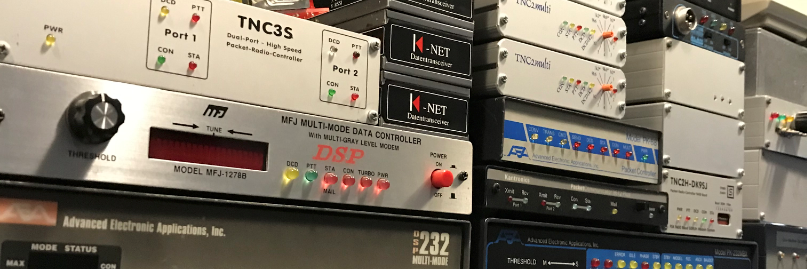Here below some examples how the configuration of the forward in different systems works.
Thanks in particular to Bob (VE3TOK) and Gus (I0OJJ) for example configs !
Copyright © http://www.langelaar.net/jnos2/
Example Configuration for JNOS 2.0k side
----------------------------------------
a) autoexec.nos
# regular listener (no IAC) for remote JNOS and BPQ systems
start telnet
# another listener (IAC) on different port for LINFBB and OBCM systems
start telnet 6300 iac
# for winlink secure login, you have to configure your callsign
mbox winlinkcall ve4klm
b) spool/forward.bbs
-------
ve3tok
# Here we are talking to a remote LINFBB system
telnet 44.x.y.z 6300 iac
+Callsign :
.ve4klm
+Password :
.BLAHBLAHBLAH
ve3tok
-------
va3tok
# Here we are talking to a remote BPQ system
telnet 44.x.y.z 8011 cronly
.ve4klm
.BLAHBLAHBLAH
+BPQ
.BPQBBS
va3tok
-------
wl2k
# Here we are talking to Winlink CMS server
telnet winlink.org 8772 cronly
+Callsign :
..VE4KLM
+Password :
.BLAHBLAH
wl2k
-------
i0ojj 0023 P
# Here we are talking to obcm v1.07b12
# NOTE : OBCM supports FC proposal, so it will use B2F, but wonder if
# I should force a B1F response so RLINE and Headers work properly ?
telnet 44.x.y.z 4719 iac
@10
+login:
.ve4klm
@10
+password:
.BLAHBLAH
@10
<areas to forward>
-------
ir0aab 0023 P
# Here we are talking to linfbb v7.0.8-beta2
telnet 44.x.y.z 6300 iac
@
+Callsign :
.ve4klm
+Password :
.BLAHBLAH
@
<areas to forward>
-------
c) setting up MY winlink authentication
cd /jnos
mkdir users * you only need to do this one time
./jnospwmgr -a <callsign> -w
it will ask you to enter the phrase that you would have received
from your winlink notice (the challenge/response phrase).
* for now please read release notes (search December 8) for more info.
Remote LINFBB host
------------------
For forwarding to VE4KLM I added the following line to 'bbs.sys' :
< FWD\VE4KLM
A forward file for that particular bbs is placed in FBB's 'fwd' directory,
so an example of forward file, 've4klm' (contents might be different for
other FBB owners.)
A VE4KLM
P A
C C ve4klm ve4klm.ampr.org 6300
V login$Wpassword$W
# Forward file -- To VE4KLM BBS (JNOS)
#
# Personal mail
#
B VE4KLM
F VE4KLM
#
# Reverse fowarding to take place
R
# Forward rest of North-America to VE4KLM
H VE4KLM.#WPG.MB.CAN.NOAM
H *.NOAM
#
Remote BPQ host
---------------
This is needed as telnet connect script for bpq in forwarding with jnos.
It is entered in the "connect script" box of the forwarding config web
page of the bpq mail server.
TIMES 0000-2359
Idletime 60
attach 3
c ve4klm.ampr.org 23 NEEDLF .login pass
General:
attach p - p is a port number cfg'd as telnet port in your bpq32.cfg
c Hostname TCPport [NEEDLF] User Password [Command]
Here :
attached 3 - I configured port 3 as telnet port
NEEDLF - Causes a Line Feed to be sent after user and password.
.login - The period before the login user name will tell jnos to use
a transparent TCP session instead of ordinary telnet.
See: http://www.cantab.net/users/john.wiseman/Documents/TelnetServer.htm
This example line below is needed in bpq32.cfg so that jnos can login into
bpq and initiate forwarding as bbs.
USER=ve4klm,password,login,BBS
Remote OBCM host
----------------
; From obcm v1.07b12
;
; INIT IR0RM file (JNOS-2.0k+)
; 0 1 2
; 012345678901234567890123
IR0RM PPPPPPPPPPPPPPPPPPPPPPPP TELNET:44.x.y.z:6300
-d -k -l -o -u
;
Remote LINFBB host
------------------
# From linfbb v7.0.8-beta2
#
IF H 00-23
S connected failure busy
C C IR0RM-1 44.x.y.z 6300
V i0ojj$Wpassword$W
ENDIF
#
